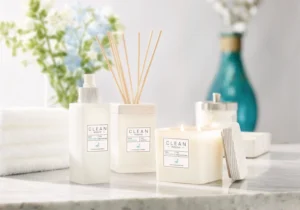What Should a Novice Know About Wine and Wine Production?
There are many people who do not know a lot about wine, even though they might enjoy San Simeon Wines now and then. You might be a beginner with wine consumption and not know all the answers. Here are a few nuggets of knowledge about wine and wine production to help get you started.
Wine is an alcoholic beverage made from fermented grapes or other fruits. The natural chemical balance of grapes lets them ferment without the addition of sugars, acids, enzymes, or other nutrients.x
Grapes are harvested from vineyards and then crushed to release their juice. The juice is then placed in a fermentation vessel, typically made of stainless steel or oak, where it is allowed to ferment. The fermentation process converts the natural sugars in the grapes into alcohol.
After fermentation, the wine is typically aged in barrels made of oak or other types of wood. This aging process can last anywhere from a few months to several years, depending on the type of wine being produced. During this time, the wine develops its flavor and aroma characteristics.
There are many different types of wine, each with its own unique characteristics and flavors. Some common types of wine include:
- Red wine: made from red or black grapes, with flavors ranging from fruity and light to rich and bold.
- White wine: made from white grapes, with flavors ranging from crisp and refreshing to rich and buttery.
- Sparkling wine: a type of wine with bubbles, made by adding carbon dioxide during fermentation or bottling.
- Rosé wine: a type of wine made from red grapes, but with a lighter color and flavor than red wine.
- Dessert wine: a type of wine with high sugar content, often served with dessert.
In addition to the type of grape and the fermentation and aging process, the flavor and aroma of a wine can be affected by factors such as the climate and soil where the grapes are grown, the winemaking techniques used, and the type of oak used in aging.
Wine is typically served with food, and the flavors and aromas of the wine can be enhanced by pairing it with the right type of food. For example, a rich, bold red wine might be paired with a hearty meat dish, while a crisp white wine might be paired with a light seafood dish.
When tasting wine, there are a few key things to look for:
- Appearance: the color, clarity, and bubbles of the wine.
- Aroma: the smells of the wine, which can be fruity, floral, or earthy.
- Taste: the flavors of the wine, which can be sweet, sour, salty, or bitter.
- Mouthfeel: the texture and weight of the wine in the mouth.
To taste wine, start by looking at the appearance of the wine. Hold the glass up to a light source and look at the color, clarity, and bubbles. Then, take a deep sniff of the wine to detect its aromas. Finally, take a sip of the wine and roll it around in your mouth to experience its flavors and mouthfeel.
When storing wine, it is important to keep it in a cool, dark place with a consistent temperature. Wine should not be stored in direct sunlight or near heat sources, as this can cause the wine to spoil. Wine should also be stored on its side to keep the cork from drying out.
Overall, wine is a complex and fascinating beverage with a rich history and a wide variety of flavors and aromas. Whether you are new to wine or an experienced connoisseur, there is always more to learn and discover about this delicious and versatile drink.
Once you gain some knowledge, go wine tasting. There are several reasons why people like to go wine tasting.
First, wine tasting is a fun and social activity that allows people to try a variety of wines in a relaxed and enjoyable setting. Many people enjoy trying new wines and discovering new favorites, and wine-tasting events provide the perfect opportunity to do so.
Second, wine tasting is a great way to learn about different wines and how they are made. Many wine-tasting events include educational components, such as presentations by winemakers or sommeliers, that provide insight into the history and production of the wines being tasted.
Third, wine tasting is a great way to support local winemakers and the wine industry. Many wine-tasting events are held at wineries or wine shops and provide an opportunity for people to learn about and support the work of local winemakers.
Finally, wine tasting is a fun and unique way to spend time with friends, family, or a significant other. Many people enjoy going to wine tasting as a group activity, and it can be a great way to bond and create new memories.
Overall, wine tasting is a popular activity because it is fun, educational, and provides an opportunity to support local businesses and spend time with loved ones.
Share this content:













